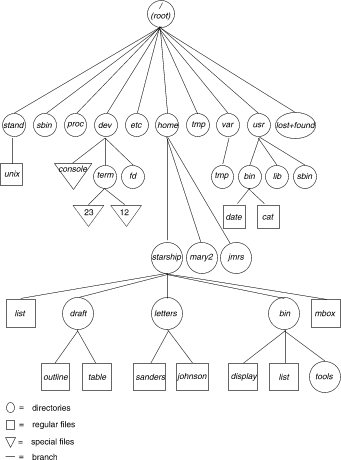
|
|
The file system is made up of a set of regular files, special files, symbolic links, and directories. These components provide a way to organize, retrieve, and manage information electronically. ``File and device input/output'' introduced some of the properties of directories and files; this section will review them briefly before discussing how to use them.
The set of all the directories and files is organized into a tree shaped structure. ``A sample file system'' shows a sample file structure with a directory called root (/) as its source. By moving down the branches extending from root, you can reach several other major system directories. By branching down from these, you can, in turn, reach all the directories and files in the file system.

A sample file system
In this hierarchy, files and directories
that are subordinate to a directory
have what is called a parent/child relationship.
This type of relationship is possible
for many layers of files and directories.
In fact, there is no limit to the number of
files and directories you may create in any directory that you own.
Neither is there a limit to the number of layers of directories
that you may create.
Thus, you have
the capability to organize your files in a variety of ways,
as shown in the preceding figure.